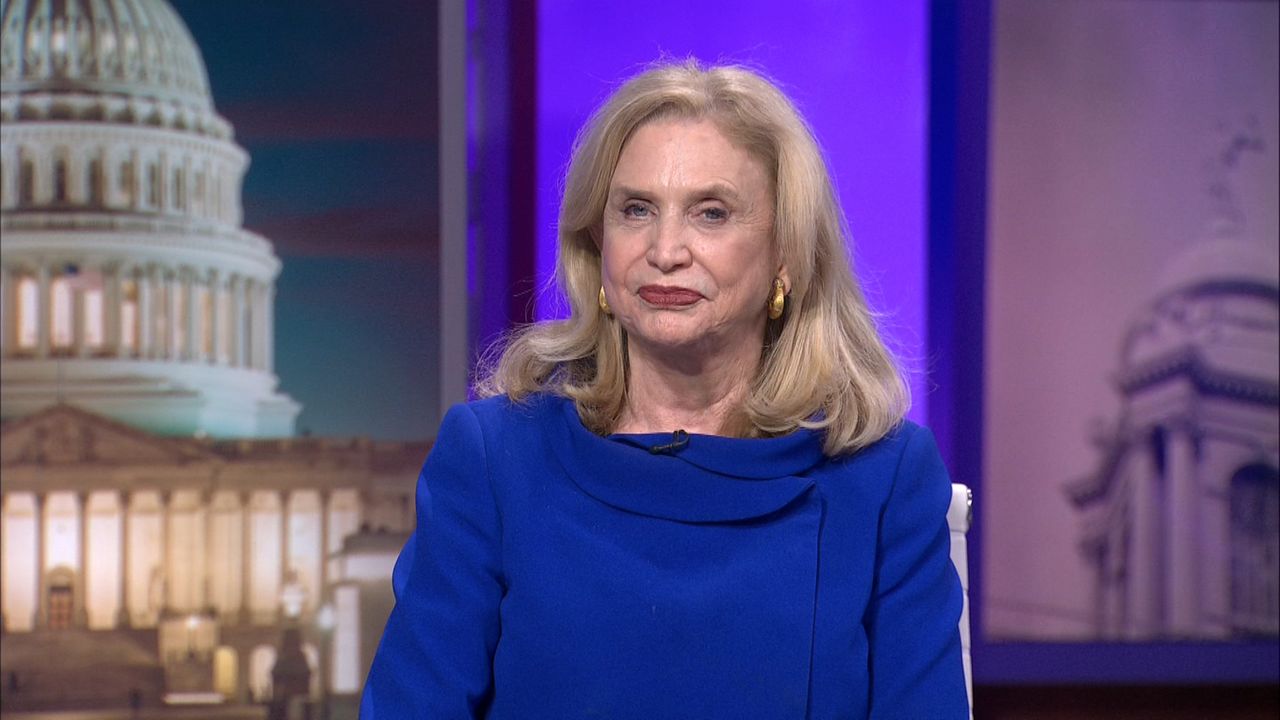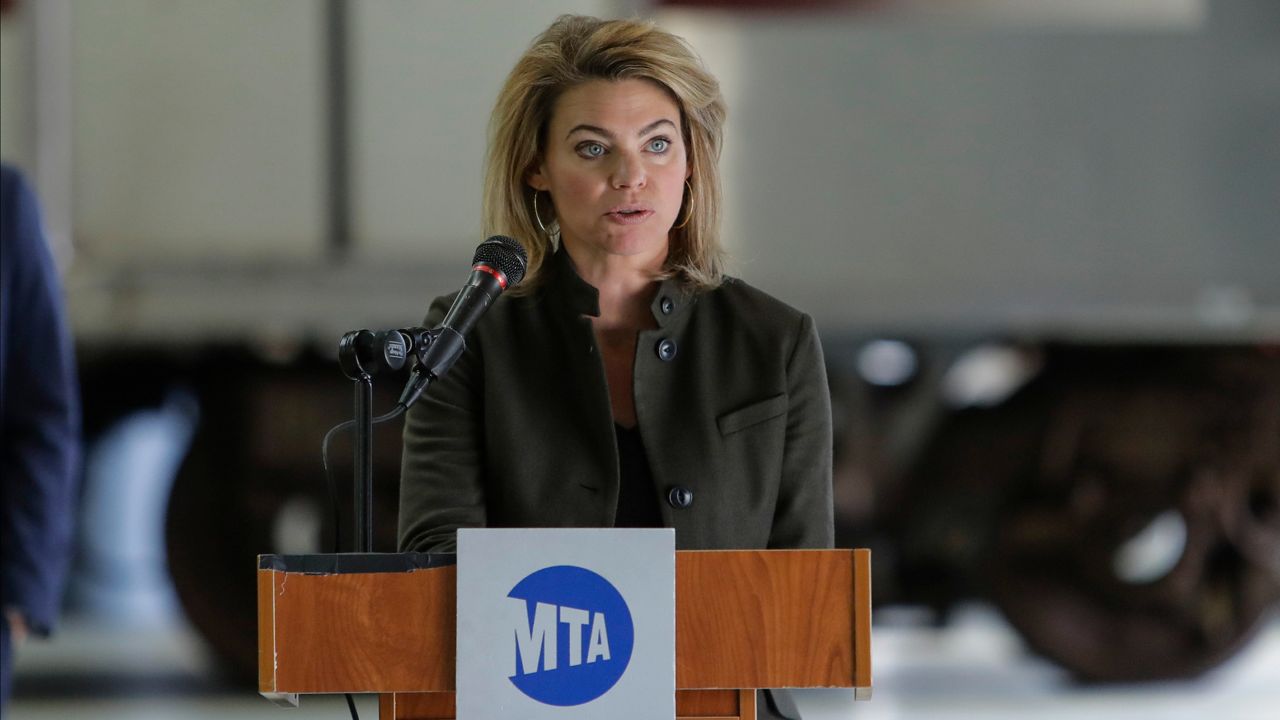NEW YORK — There was debate earlier this summer over whether police should enforce face covering compliance, but New York City Transit’s interim boss supports having police officers, not MTA workers, be the ones to make sure New Yorkers “mask up.”
“I don’t want the MTA workforce enforcing anything, because we’re not law enforcement, right? We’ve had a huge uptick in worker assaults,” interim New York City Transit President Sarah Feinberg said in an interview with Inside City Hall Anchor Errol Louis on Tuesday. “MTA workers who are responsible for operating a bus, operating a train, working in a station booth, cleaning the subway system — I can’t also ask them to be law enforcement agents, right? So the reality is, MTA police and NYPD officers are responsible for enforcing all of our rules and regulations.”
Under the rule, which went into effect this week, commuters who refuse to wear a mask can get a $50 fine. The rule applies to the subways and buses, as well as the Long Island Rail Road and Metro-North commuter railroads.
But who should handle enforcement is a controversial issue. While MTA police and the NYPD are tasked with enforcing the new mandate, officers hammering down on social-distancing violations resulted in backlash several months ago. Several videos surfaced of clashes between NYPD officers and communities of color over social-distancing regulations to prevent the spread of coronavirus.
Some elected officials and activists were outraged, saying the NYPD was targeting Blacks and Latinos for enforcement and not white communities. NYPD data showed Black people were ticketed and arrested more than other groups for violations of COVID-19 regulations.
In mid-May, Mayor Bill de Blasio said the NYPD would no longer give tickets or arrest individuals for not wearing a face covering.
MTA surveys show that a lack of mask compliance is not a widespread issue. More than 90 percent of riders have a mask, though some wear it improperly.
Feinberg told Inside City Hall the rule is directed at that minority of commuters to get the number to 100 percent.
She also pointed out that commuters will be given the opportunity to get a free mask through the transit system, such as at subway stations and on buses. And she says any straphanger not wearing a mask will be reminded first before getting the fine.
No End in Sight for Overnight Subway Closures
As more sectors of New York City return from the coronavirus shutdown, one part of the old New York City — overnight subway service — is still in limbo, and Feinberg isn’t saying if it’ll return any time soon.
“I don’t know if it’s permanent, but it’s certainly going to continue for now,” she said when asked if overnight cleanings would continue.
In May, for the first time in the city’s history, the subway system began shutting down overnight, 1 a.m. to 5 a.m., for daily cleanings due to the coronavirus pandemic. When it announced the move, the MTA calculated train ridership was down 90 percent during those hours, but the early morning shutdowns were still set to affect approximately 11,000 straphangers.
It’s not clear how many commuters are impacted now, as subway ridership has ticked up in the months since the height of the pandemic in the city. Buses continue to run overnight, although free cab service initially offered for essential workers during the overnights is no longer given.
Some commuters fear the temporary end of overnight service will become a permanent feature of the subways as the cash-strapped MTA looks to cut costs amid a massive loss in revenue. The transit agency has denied that, although Feinberg admitted service reductions and layoffs are possible.
Last month, the MTA warned it would institute 'draconian measures' that could include massive service cuts and fare hikes without an immediate $12 billion stimulus package from the federal government. Subways, buses, and the Staten Island Railroad could see a 40 percent cut in service without an immediate influx of federal funds, MTA Chairman Patrick Foye said during an MTA board meeting.
Backing the MTA’s Reorganization Plans
Feinberg was brought on as the interim transit president after Andy Byford resigned last year following news of a reorganization plan that would leave him with less authority. The position of New York City Transit president would be stripped of the power to plan a major upgrade of the subway's ancient signal system and installation of elevators at more stations. Instead, that work would be consolidated at MTA headquarters, under the direction of Gov. Andrew Cuomo's handpicked MTA chief.
A consolidation might create efficiencies, but critics say the reorganization would amount to a power grab by MTA headquarters, and by extension, Cuomo. And 2,700 jobs are on the chopping block at the MTA works to consolidate. Of the 2,700 positions, most will be administrative posts, as back office departments like legal and HR are consolidated. But 700 will be in transit operations.
While the MTA’s transit plans have been upended by the coronavirus pandemic, Feinberg told NY1 the transition continues and she backs it.
“We absolutely need a reorg of the organization," she said. "We’ve got all kinds of layers of, whether you call it bureaucracy or just sort of jobs on top of jobs on top of jobs. These are all wonderful people. My colleagues are the most talented people I have ever worked with. But there hasn’t been a really close look at, how do we reorganize this place to make sure it’s working for taxpayers, in a long time.”
------
Did you know you can now watch, read and stay informed with NY1 wherever and whenever you want? Get the new Spectrum News app here.
------
Watch the full interview above.
------
This story includes reporting from Dan Rivoli.
------
Looking for an easy way to learn about the issues affecting New York City?
Listen to our "Off Topic/On Politics" podcast: Apple Podcasts | Google Play | Spotify | iHeartRadio | Stitcher | RSS
-----
Further Coronavirus Coverage
What to Do If You Test Positive for COVID-19
Who Will Get a Coronavirus Vaccine First — And Who Decides?
How Hospitals Protect Against the Spread of Coronavirus
Coronavirus Likely Spreads Without Symptoms
Coronavirus: The Fight to Breathe
Experts Say Masks Are Still a Must
The Race for a Coronavirus Vaccine
The U.S. May Face a Second Wave of Coronavirus Infections
Cuomo Granted Broad New Powers as New York Tackles Coronavirus







